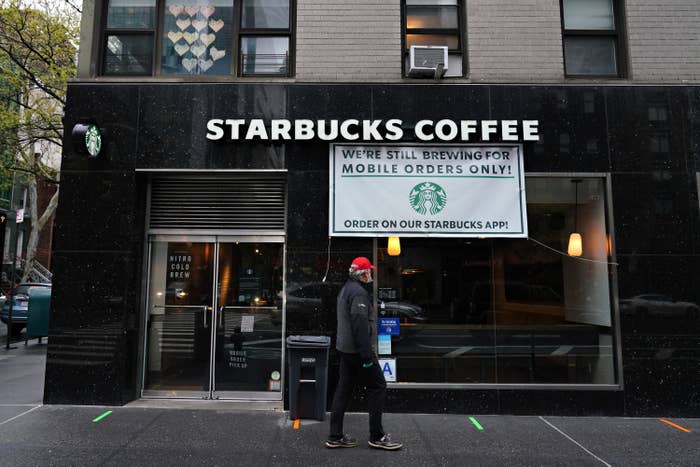
Starbucks will begin reopening cafés for to-go service in the US beginning in May, the company told investors today. By early June, Starbucks expects to reopen 90% of its company-run locations in the US.
The coffee chain, which has closed about half of its company-owned US locations since March (cafés run by licensees are operated separately) due to the coronavirus pandemic, will reopen its stores in "modified formats," including service via drive-thru, order ahead and pickup, and delivery, depending on the condition in local markets. "Cafés were, and will remain closed for the immediate future" and generally will not be taking walk-in orders at the register, a spokesperson told BuzzFeed News.
Instead, stores will ask customers to download the Starbucks app and order ahead so they can "pick up and go" at the store. Starbucks will also be available for delivery on Uber Eats. All workers will have their temperatures checked as part of new safety measures.
In May, the company will also resume marketing activities, which it has paused, as well as television, digital, and social media advertising.
Restaurants have been wrestling plans for when and how to safely reopen as states begin to lift to shelter-in-place orders and gradually allow some places to reopen with new restrictions on capacity to maintain social distancing. Starbucks joins companies like McDonald's, Chick-fil-A, and Dunkin' Donuts, which said they will not reopen seating in their dining rooms, even as states lift restrictions.
In addition, Starbucks has reopened almost all of its stores in China "with modified operations."
CEO Kevin Johnson said in a release, "We are leveraging our experience in China to inform our actions in other markets, including the US, where we are now entering the 'monitor and adapt' phase to reopen many more stores with best-in-class safety protocols."
